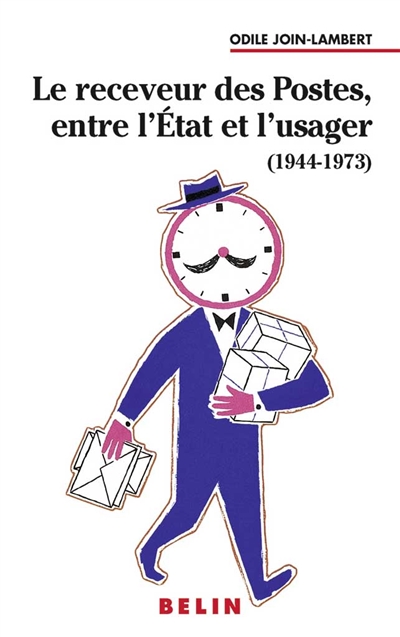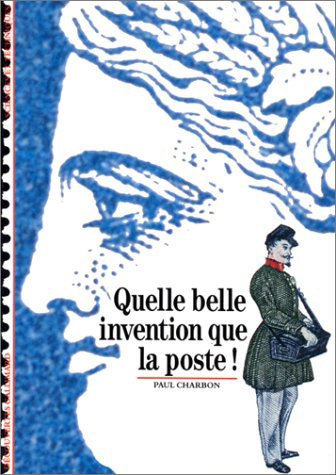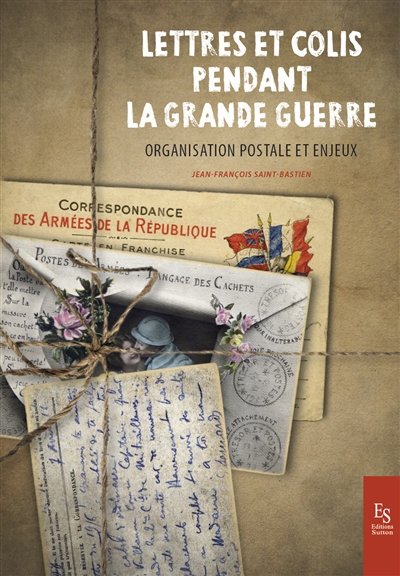Recherche simple :
- Sujet : poste
Documents en rayon : 1667
par Join-Lambert, Odile
Belin
2001 -
-
Disponible - 336.56 JOI
Niveau 3 - Economie
Résumé : Les receveurs des Postes sont des protagonistes essentiels de la production des services publics et de leurs relations. L'évolution de leurs fonctions depuis la guerre est analysée à travers des centaines de dossiers et 130 témoignages directs.
par Cumin, Louis
Éd. universitaires
1984
-
Disponible - 352.57 CUM
Niveau 3 - Droit
par Delpard, Raphaël (1942-....)
l'Archipel
2014 -
-
Disponible - 930.723 DEL
Niveau 2 - Histoire
Résumé : L'histoire de la Première Guerre mondiale du point de vue de la correspondance qu'entretenaient les soldats français avec leur famille et leurs amis. A l'aide de documents d'époque, l'auteur retrace l'évolution de la poste aux armées, qui a dû se moderniser pour faire face à l'ampleur du phénomène : 4 millions de lettres, 1,5 million de colis et 590.000 journaux étaient acheminés chaque jour. ©Electre 2014
par Rothschild, Arthur de (1851-1903)
Ed. Slatkine
1984
-
Disponible - 352.57 ROT
Niveau 3 - Droit
par Gallagher, Winifred
Penguin Books
2016 -
-
Disponible - 973-1 GAL
Niveau 2 - Histoire
Résumé : A masterful history of a long underappreciated institution, How the Post Office Created America examines the surprising role of the postal service in our nation’s political, social, economic, and physical development. The founders established the post office before they had even signed the Declaration of Independence, and for a very long time, it was the U.S. government’s largest and most important endeavor—indeed, it was the government for most citizens. This was no conventional mail network but the central nervous system of the new body politic, designed to bind thirteen quarrelsome colonies into the United States by delivering news about public affairs to every citizen—a radical idea that appalled Europe’s great powers. America’s uniquely democratic post powerfully shaped its lively, argumentative culture of uncensored ideas and opinions and made it the world’s information and communications superpower with astonishing speed. Winifred Gallagher presents the history of the post office as America’s own story, told from a fresh perspective over more than two centuries. The mandate to deliver the mail—then “the media”—imposed the federal footprint on vast, often contested parts of the continent and transformed a wilderness into a social landscape of post roads and villages centered on post offices. The post was the catalyst of the nation’s transportation grid, from the stagecoach lines to the airlines, and the lifeline of the great migration from the Atlantic to the Pacific. It enabled America to shift from an agrarian to an industrial economy and to develop the publishing industry, the consumer culture, and the political party system. Still one of the country’s two major civilian employers, the post was the first to hire women, African Americans, and other minorities for positions in public life. Starved by two world wars and the Great Depression, confronted with the country’s increasingly anti-institutional mind-set, and struggling with its doubled mail volume, the post stumbled badly in the turbulent 1960s. Distracted by the ensuing modernization of its traditional services, however, it failed to transition from paper mail to email, which prescient observers saw as its logical next step. Now the post office is at a crossroads. Before deciding its future, Americans should understand what this grand yet overlooked institution has accomplished since 1775 and consider what it should and could contribute in the twenty-first century. Gallagher argues that now, more than ever before, the imperiled post office deserves this effort, because just as the founders anticipated, it created forward-looking, communication-oriented, idea-driven America. - Note de l'éditeur
par Charbon, Paul (1925-....)
Gallimard
1991
-
Disponible - 336.56 CHA
Niveau 3 - Economie
PIE-Peter Lang
2016 -
-
Disponible - 336.56 LER
Niveau 3 - Economie
Résumé : Une étude consacrée à l'histoire de la Poste après la Seconde Guerre mondiale. Les contributeurs évoquent ses relations avec l'Etat, son environnement local et international, son organisation, la nature de ses missions de service public mais aussi de ses activités mercantiles. L'étude se termine sur l'analyse des évolutions récentes et dresse un tableau de ce service au début du XXIe siècle. ©Electre 2016
Archibooks ; Poste immo
2010 -
-
Disponible - 720.1 ARC
Niveau 3 - Arts
Résumé : Le patrimoine architectural et immobilier de la Poste est présenté.
par Saint-Bastien, Jean-François
Éditions Sutton
2018 -
-
Disponible - 794.9 SAI
Niveau 3 - Sports et jeux
Résumé : Présentation de l'importance des lettres et des colis durant la Première Guerre mondiale, qui permettaient d'échanger des nouvelles ou de répondre aux besoins des soldats et des prisonniers. L'auteur aborde également l'organisation des Postes et de l'acheminement du courrier, la législation ou le contrôle de la correspondance. ©Electre 2018

 Les bibliothèques de la ville de Paris
Les bibliothèques de la ville de Paris
 Les bibliothèques universitaires
Les bibliothèques universitaires
 La BnF
La BnF
 L'encyclopédie Wikipédia
L'encyclopédie Wikipédia
 L'Encyclopædia Universalis
L'Encyclopædia Universalis
 La bibliothèque du film
La bibliothèque du film
 La médiathèque de la Philharmonie de Paris
La médiathèque de la Philharmonie de Paris














